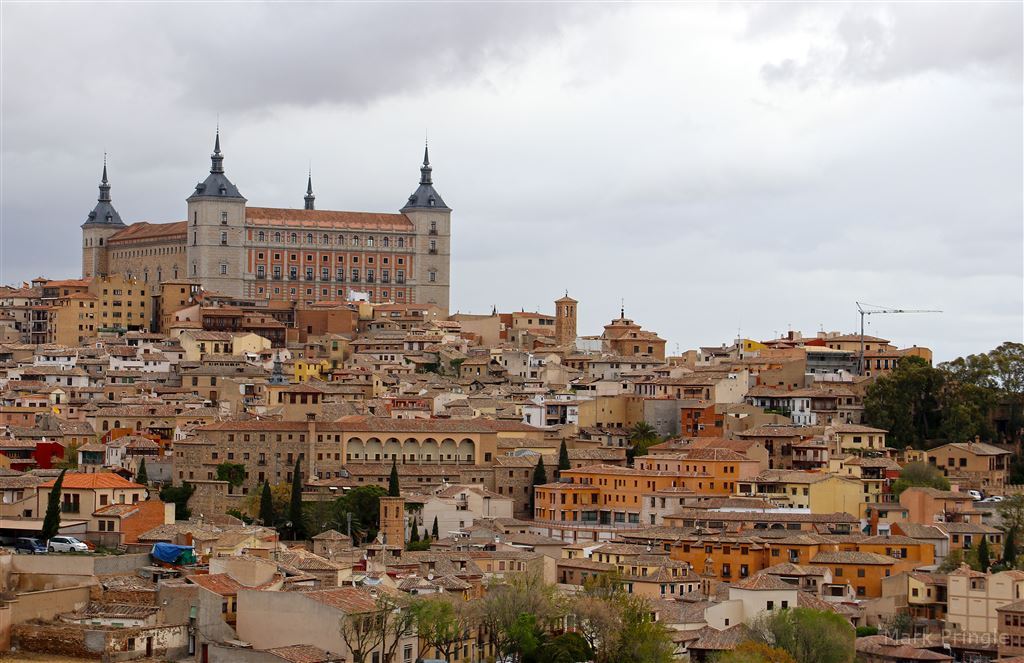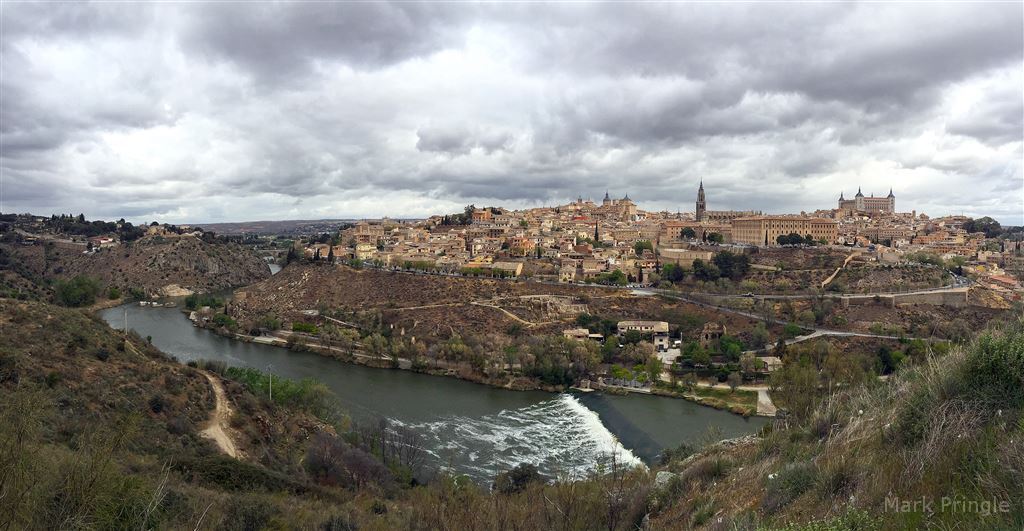In the geographical core of Spain, barely an hour drive southeast from the capital Madrid, the ancient city of Toledo is arising from the granite hills of Castille-La Mancha – the province once immortalized by Miguel de Cervantes as the birthplace and the roaming grounds of his famous character Don Quixote. Toledo was built in the midst of this bountiful land – on a route punctuated by windmills and vineyards, at a crossroad of faiths and traditions, where imagination and reality have converged for centuries.
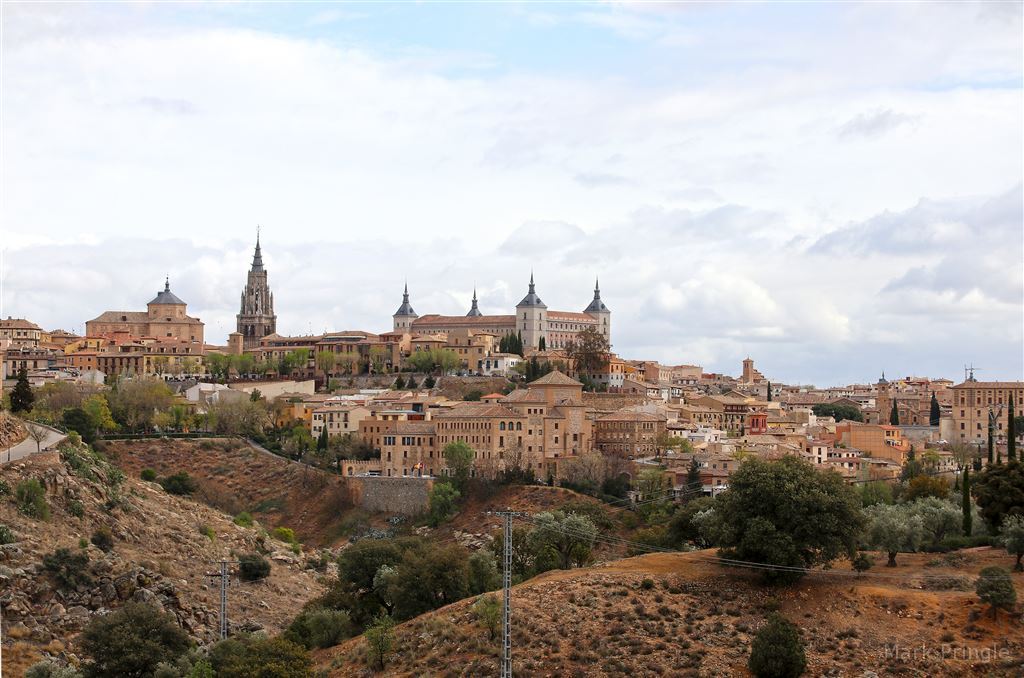
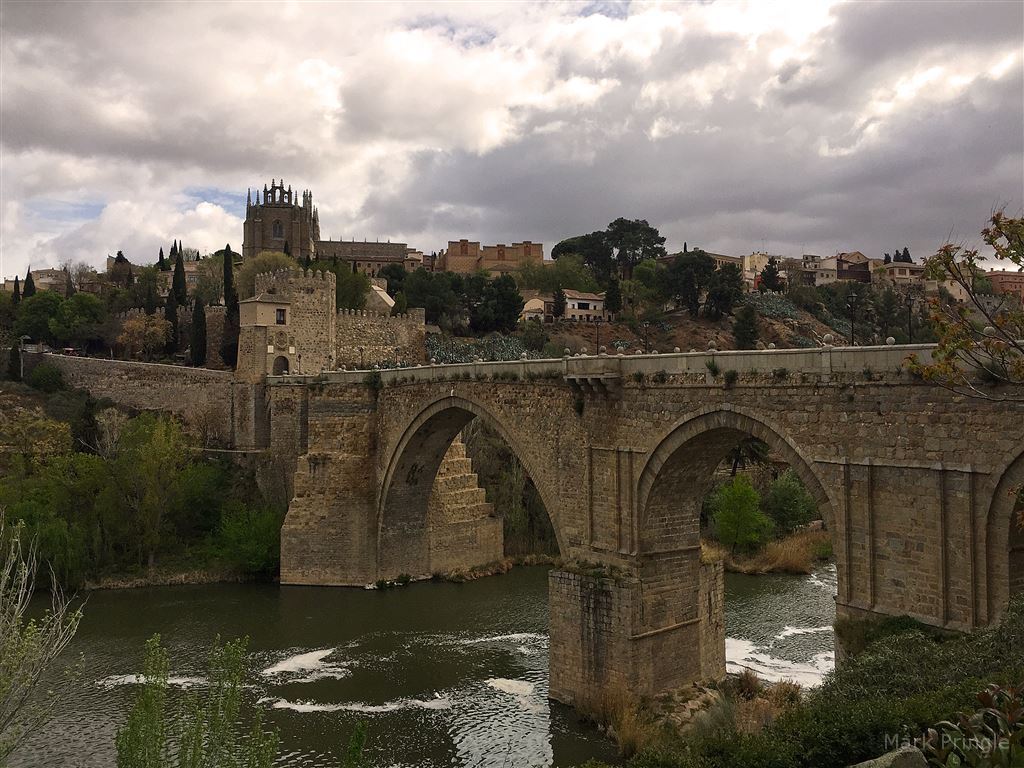
The long Tagus River (locally known around Toledo as Tajo) which courses through well over 1000 miles across the Iberian Peninsula, surrounds the city from three sides. Most likely, it was this natural delineation of Toledo as a well-protected spot that was appreciated by its first known conquerors, the Romans. Once establishing control over Toledo, they invested expensively in its infrastructure, pouring resources into the settlement and supplying it with all marks of urban excellence of the era – aqueduct, bridge, public baths, and of course, a large Roman circus.
The Roman period was followed by Visigothic rule, and then significantly, by the Moors’ Iberian conquest in the early 8th century. For the next several centuries, while the Moors consolidated their political and military presence on the peninsula, the Catholic kings from the North would try to claim back their authority – the process known as the Reconquista. It is within this historical frame that Toledo not only gained its full administrative significance but also truly flourished as the cultural soul of Spain. Toledo was known as “the city of three religions” – the meeting point of three major monotheistic faiths – Christianity, Judaism and Islam. Here, on the background of often tumultuous political changes in Europe, communities of scholars, architects, writers, and artisans were living side by side, working in a vibrant environment of relative peace and harmony, and often collaborating on artistic projects. The city architecture combined the creative styles of its central communities in a unique synthesis of techniques, preserved in some of Toledo’s best-known landmarks. Catedral de Toledo, a magnificent Gothic building, was erected in the 13th century on the site of a former Muslim mosque, and right next to the Jewish quarter (La Juderia). Another outstanding building, the synagogue Santa Maria La Blanka constructed in 1180 was commissioned by the Christian authorities and designed by Islamic architect, for religious use by the Jewish community. It presents a beautiful amalgamation of decorative styles – its snow-white pillars rather than columns and horseshoe arches are reminiscent of the Arabic architecture, the intricate friezes bear the mark of Hebrew decorative art, and the ceiling is crafted in a style typical of the Catholic cathedrals.
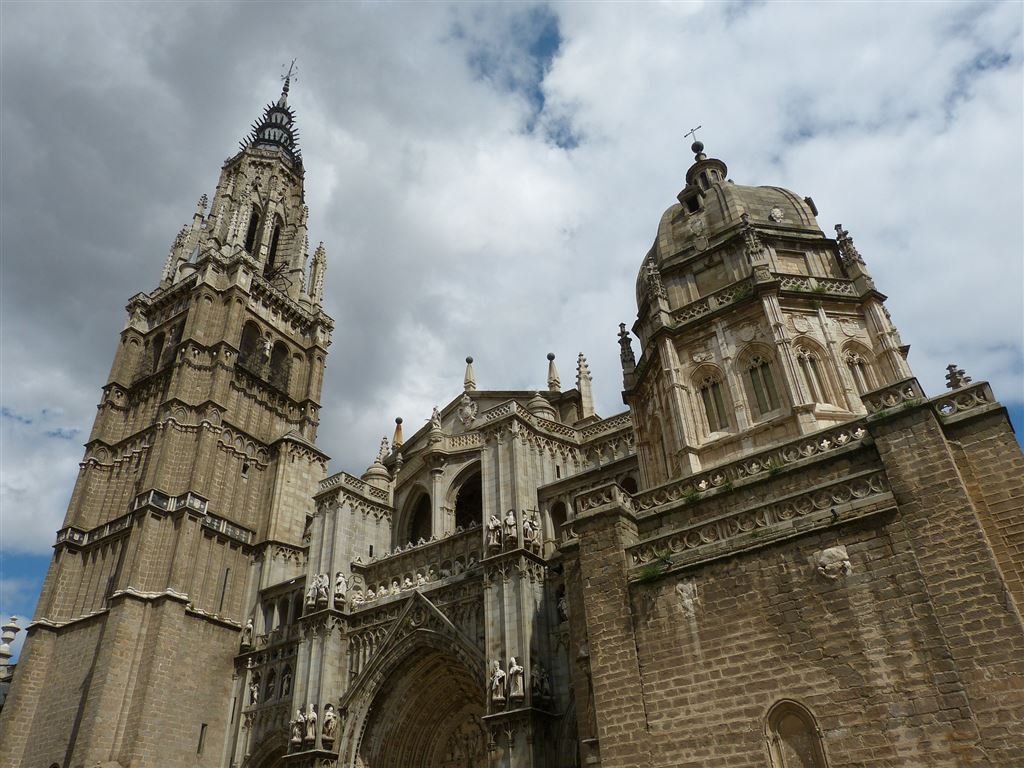 Church of Santo Tomé
Church of Santo Tomé
It is not just the architectural heritage that carries through the fusion of multiple cultural influences of the Castilian city. Huddled amongst its ancient buildings and lining the winding streets Toledo’s numerous eateries offer a range of famous local delicacies. Some of the recipes date back hundreds of years, such as the protected origin dessert of Mazapan de Toledo – the richly sweetened almond paste, first brought in by the Arab gastronomes, favoured for centuries by the Sephardic Jews, and lovingly recreated by Toledo’s confectioners of today, to be enjoyed by tourists and locals alike.
